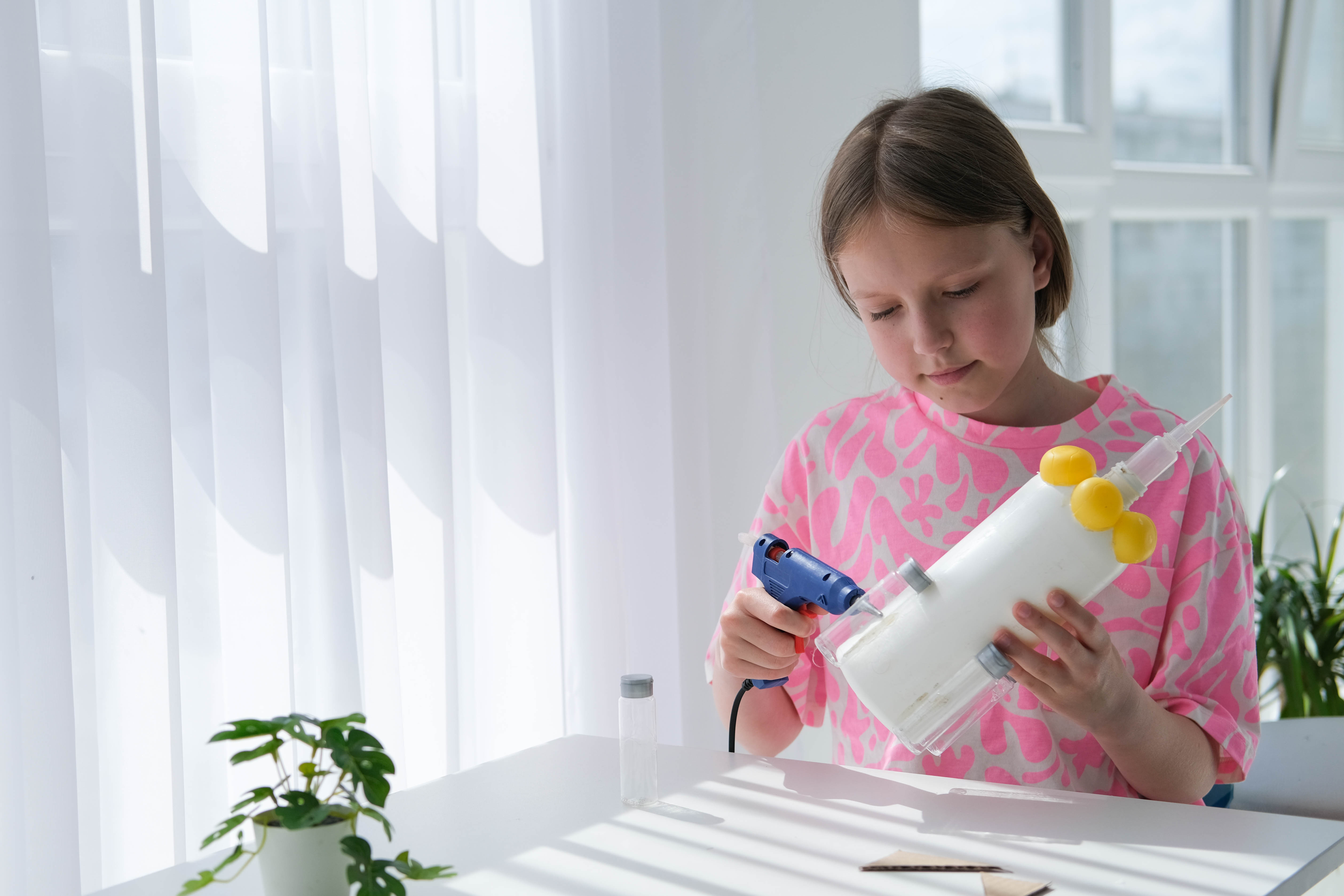Designing and Launching Rockets
Introduction
Rockets are an exciting way to explore physics, aerodynamics, and engineering. In this activity, Scouts will design and build their own bottle rockets, using air pressure or a bicarb and vinegar chemical reaction to launch them. By testing different designs, Scouts will investigate how forces like gravity, thrust, and drag impact flight.
Scouts can also modify their rockets to carry a parachute or even protect a fragile payload (like an egg!) to test safe landings.
What you'll need
-
For Rocket Construction:
- Empty plastic bottles (1.25L soft drink bottles work best)
- Cardboard or plastic fins (for aerodynamics)
- Tape, glue, or hot glue gun
- Scissors or craft knife (adult supervision required)
- A cone (rolled paper or plastic) for the nose
For Launching:
-
Air Pressure Rockets:
- Bike pump with valve attachment
- Water (for added thrust)
- Launch stand (can be built using PVC pipe or similar materials)
-
Bicarb and Vinegar Rockets:
- Bicarbonate soda (baking soda)
- Vinegar
- Plastic film canisters or small bottles with tight lids
- Tissue or paper towel (to delay reaction)
For Safety:
- Eye protection (goggles)
- Clear launch zone
- Risk assessment and Leader supervision
Before you begin
Discuss with the Unit:
- How do rockets work?
- What forces act on a rocket during flight? (Thrust, gravity, drag)
- What makes a rocket fly further or higher?
- What safety precautions are needed for launching rockets?
Decide which type of rocket to build:
- Air Pressure Rockets (use water and air pressure to launch)
- Bicarb and Vinegar Rockets (use a chemical reaction for propulsion)
Ensure a safe launch area is chosen – away from power lines, buildings, and trees.

Activity
-
Build Your Rocket:
- Decide on your design – consider the shape, fins, and weight distribution
- Use recycled materials to construct the rocket body
- Attach fins and a nose cone to improve aerodynamics
-
Prepare for Launch:
- Ensure all Scouts and spectators are at a safe distance
- Place the rocket on the launch stand
- For air pressure rockets: Pump air into the rocket and release!
- For bicarb & vinegar rockets:
- Fill the bottle with vinegar
- Wrap bicarb soda in tissue paper and quickly drop it in
- Seal the bottle tightly, place it upside-down, and stand back!
-
Observe and Record Results:
- Measure flight distance and time in the air
- Compare different designs to see what works best
Change the challenge level
Easier:
- Use pre-made rocket bodies and focus on decorating or adding fins
- Test a basic stomp rocket (paper rocket launched by jumping on an airbag)
Harder:
- Modify the design to carry a parachute for a controlled landing
- Add a payload challenge: Can the rocket land with an egg inside without breaking it?
- Experiment with different angles of launch and record the impact on flight distance
Reflection
- Did the rocket behave as expected? Why or why not?
- What were the best design features? What could be improved?
- What impact did different factors (fins, weight, launch angle) have on flight?
- If we were to launch rockets again, what would we change about the design?
- How does this experiment relate to real-world space exploration?


